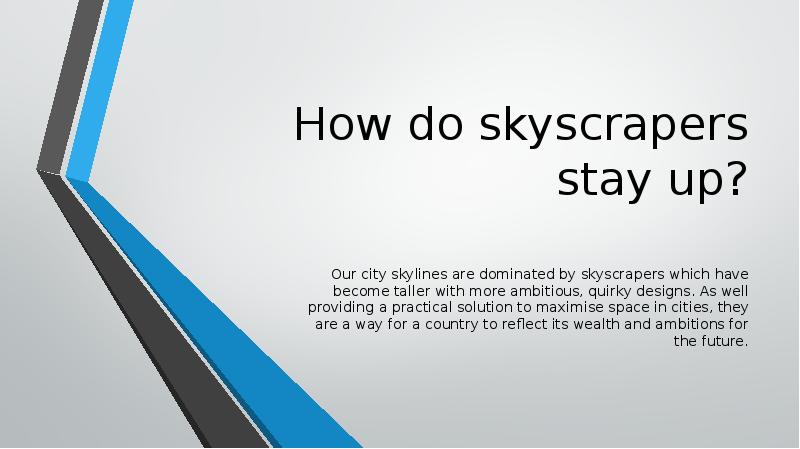How do skyscrapers stay up? презентация
Содержание
- 2. Soft ground This is the case in London where many of
- 3. Fighting the wind Base We might think that the wind is
- 4. The Citigroup Center, formerly known as the Citicorp Center, has a
- 5. The Construction Process Each skyscraper is a unique structure designed
- 6. How It’s Made: Skyscrapers
- 7. Скачать презентацию






Слайды и текст этой презентации
Похожие презентации





























